Subnautica developer Unknown Worlds wants to make the 'world's best digital miniatures game'
Time to get painting.
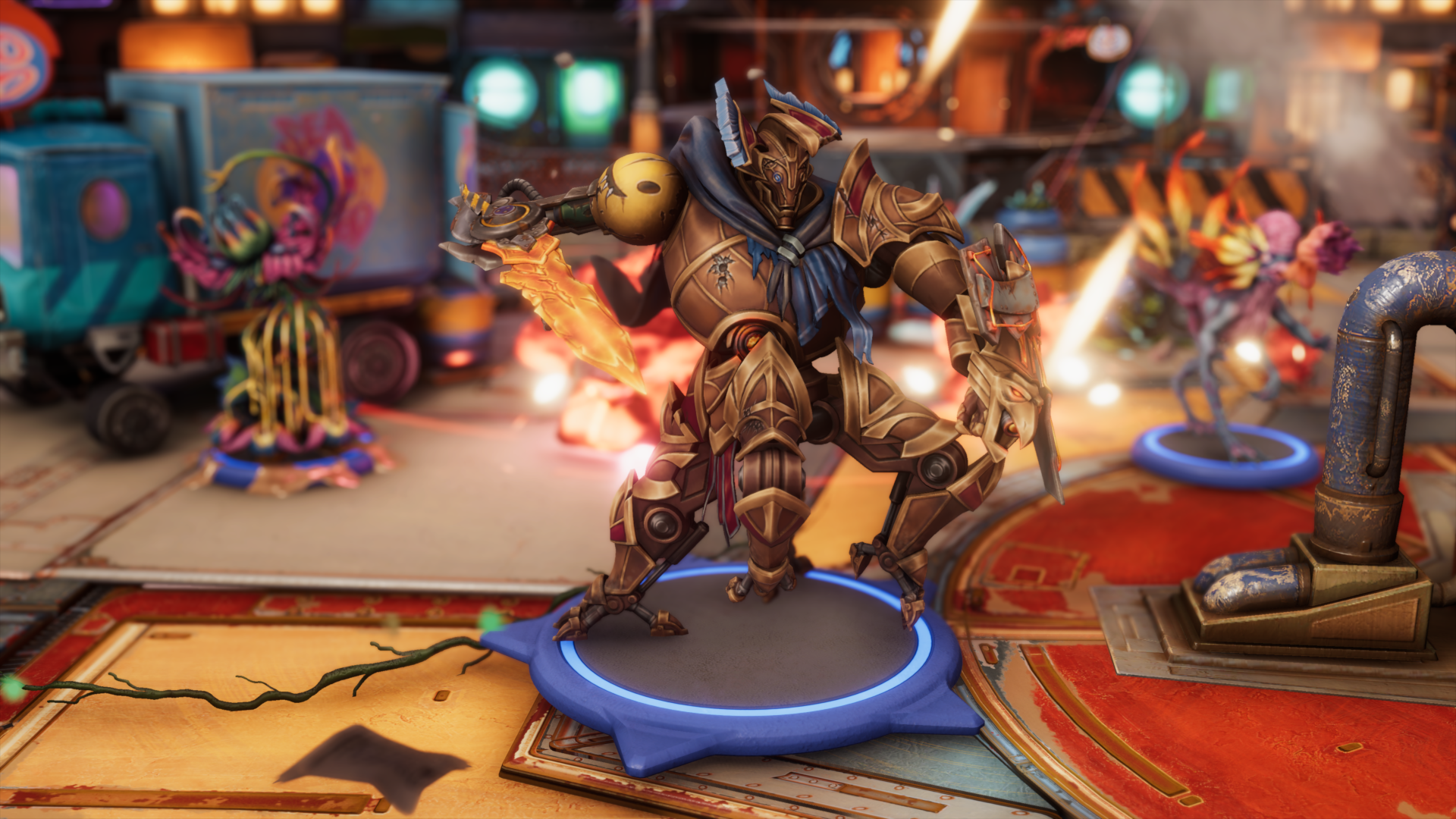
Videogames owe a lot to their tabletop counterparts, especially when it comes to turn-based strategy and tactics, but one of the best parts of fielding armies of little warriors often gets overlooked in the digital realm: model painting. Moonbreaker, from Subnautica studio Unknown Worlds, has rectified this frequent omission and then some, giving us something that feels pure tabletop, but on PC.
Moonbreaker is a sci-fi-fantasy tactics romp where you build a crew of unique characters, paint them just like you would real miniatures, summon them into 12-minute battles and try to defeat the opposing crew's captain. Your goal is simple, then, but beyond that is a whole lot of complexity drawing from diverse sources like Warhammer, Cosmic Encounter and Magic: The Gathering. And the moment you look at it, you'll know you're staring at a tabletop game. The way units move like they're being picked up off the board, and the way the terrain looks like something built for a Warhammer 40k tournament—it's unmistakable.
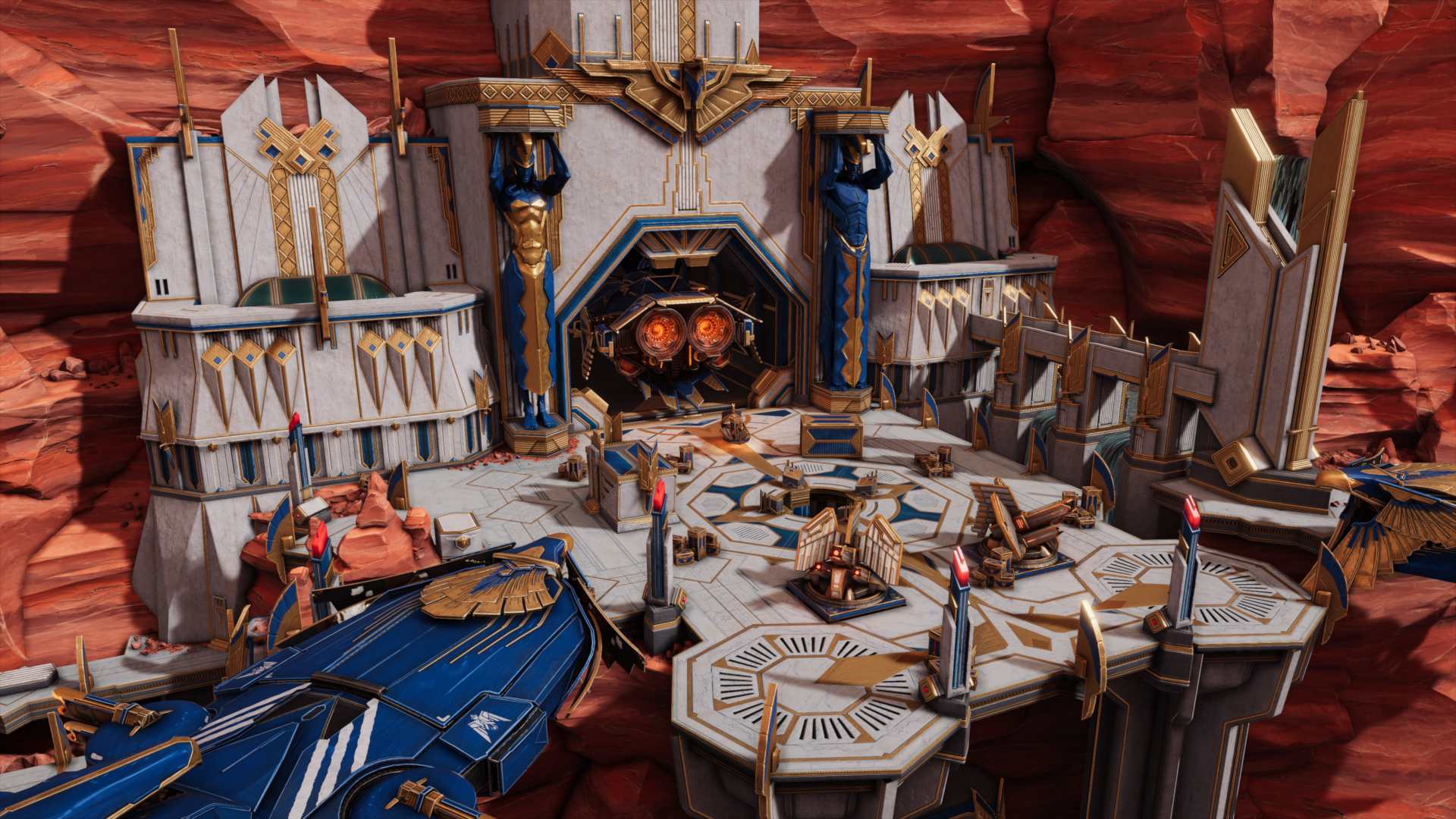
"We wanted to make something new," says Unknown Worlds co-founder Charlie Cleveland. "We're Unknown Worlds, we like to try crazy stuff. Maybe not that crazy. But we try to push things forward and keep things fresh. We're making the world's best digital miniatures game. We want to take the miniatures hobby and keep what is amazing about it, which is like all the analogue part of it, the imagination part of it, the tactile, physical nature of it. But we want to remove all the other barriers, which are like this giant investment you have to make in money, time, rules, physical setup—all that stuff. We just want to remove all that. We're trying to streamline and make more accessible the entire tabletop hobby, not just the game, but the hobby itself."
Battles don't play out like your typical tactics game, where you start at full-strength and every turn threatens to weaken you. First you create your roster, with a single captain and 10 crew, "kind of Guardians of the Galaxy or Firefly style", says Cleveland. But you don't get access to your full roster when the battle begins. Instead, you get a randomised selection, which can be called down from your orbiting ship. "So the pace builds up. It's not war, and it's not attrition. It's like you're building up, maybe like StarCraft, or traditional videogame pacing, where it escalates."
The ship plays a role, too. At the beginning of a match, you'll get a couple of ship assists, picked from a larger pool, giving you access to things like healing through the Medical Recall ability, or the Vortex Beam, which pulls allies and enemies alike towards a specific point. These can also synergise nicely with your units' abilities. If you're playing with one that grows more powerful with each attack, for instance, you can use the Medical Recall assist to take them out of the fight, heal them up, and then plonk them back down with all their stats intact, allowing you to ensure that they keep growing and growing.
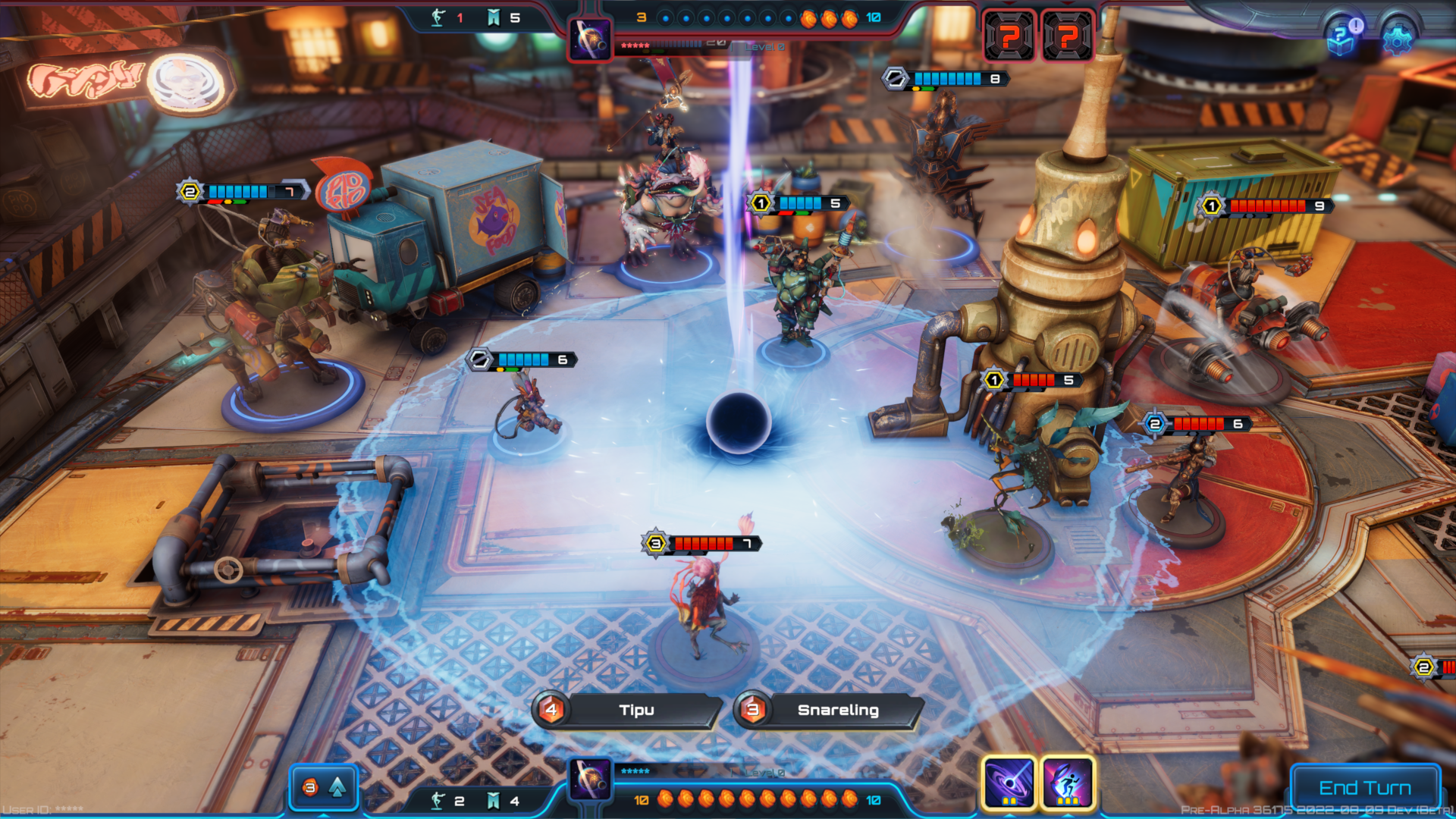
Active abilities cost Cinder, Moonbreaker's magical resource, which is harvested from the cores of moons. Bringing in units also costs Cinder. Passive abilities just happen in the background and cost nothing, but typically have prerequisites. With Cinder being a limited resource, you might want to save them up for some big moves, like firing off a couple of abilities and bringing in another unit all in one turn. You can bank up to three for just such a situation. However! There will also be situations where having no Cinder is a boon. The Cornered ability, for example, gives +2 to attack and increases the distance the unit can travel, but only if you've run out of Cinder.
We're trying to streamline and make more accessible the entire tabletop hobby, not just the game.
Charlie Cleveland, Unknown Worlds
Every unit gets one ability, except captains, who boast three. Extilior, a hulking, heavily armoured captain from the Methedori culture—more on them in a bit—has the Justice passive ability, granting Hope to any allies in range when an enemy is defeated. Hope reduces damage by 1, which could make the difference between life and death.
The biggest gaming news, reviews and hardware deals
Keep up to date with the most important stories and the best deals, as picked by the PC Gamer team.
Hope is also one of Extilior's active abilities, so he can pick a specific unit to buff, even if he's not just defeated someone. The final ability, Valorous Blades, is a nasty spinning attack that damages all units in range. Note that both of these two abilities, unlike the passive, specify "units" and not "enemies" or "allies". You'll see that a lot in Moonbreaker, whether it's a healing ability or an offensive one.
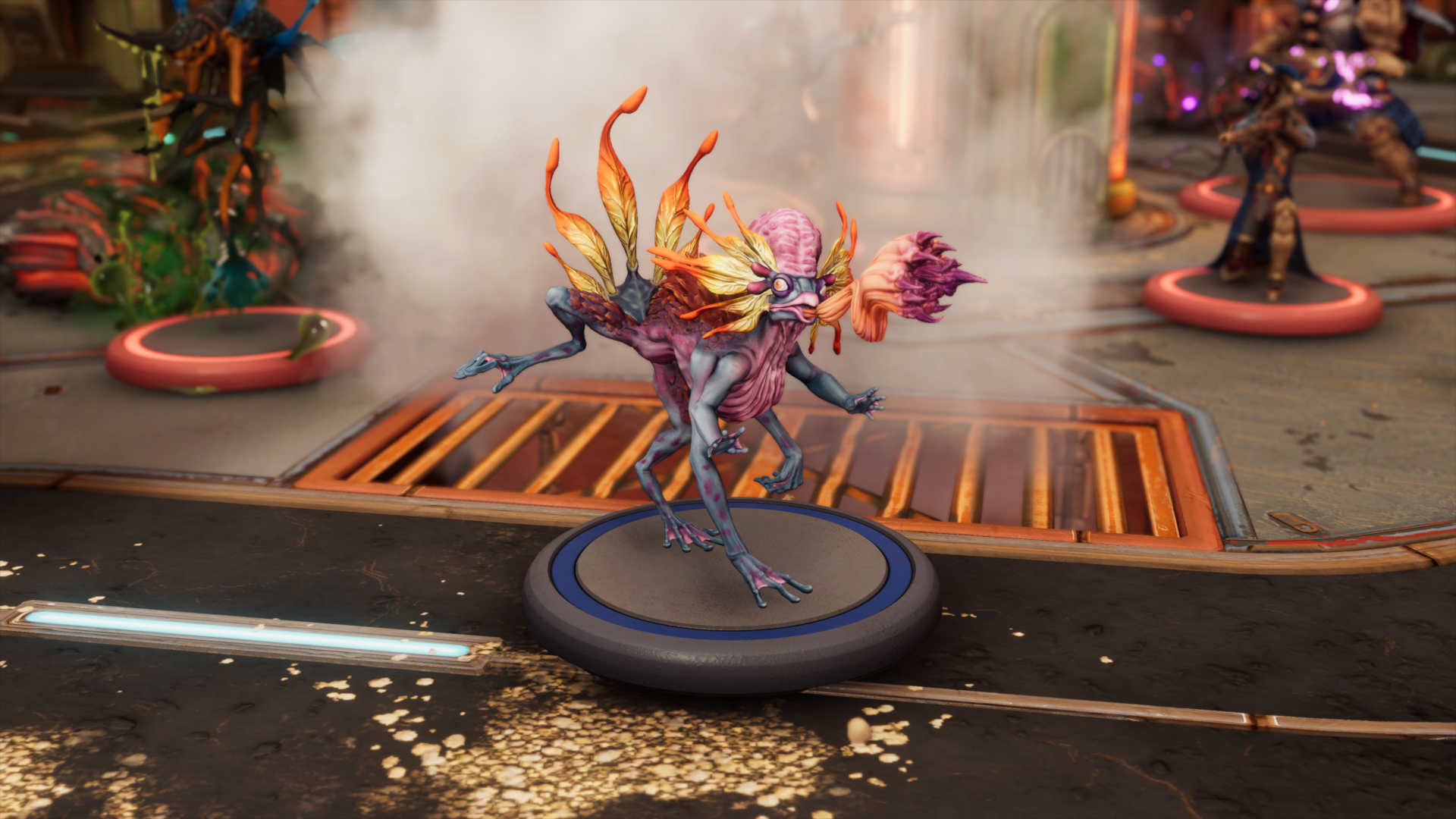
"Everything in this game basically affects, whenever possible, both sides," Cleveland explains. "We want all abilities to be used in many, many different ways that we've never thought about. So we want to make sure that, yes, it is possible to kill your own units. Sometimes you actually want to. I mean, it's pretty rare, but it does happen."
Culture vulture
All of these characters belong to one of three cultures, with more coming in future seasons. But when you make your roster, you can mix and match—this isn't a culture war. The Methedori are Roman-inspired protectors, which I guess makes them stuffy space cops, and while that also means there's some aesthetic similarities with Warhammer 40k's Imperium, the Methedori are rather less fascist. Then there are the Smugglers, a rag-tag group of crooks and rebels, including some former Methedori characters. The final culture, the Cholek, have more spiritual leanings—though they certainly aren't pacifists—and an aesthetic inspired by Central American cultures.
There's a lot of variety within each culture, too. Making a Smuggler list doesn't mean restricting yourself to Han Solo and Malcolm Reynolds knock-offs. Instead you can recruit Toxoid, a grotesque, flying bug that's dripping with venom; Crankbait, with her hoverbike and mechanical hand/grappling chain, which lets her drag units towards her; and Chuck & Co., a guy riding a mech that mimics his movements, whose speciality is picking units up and throwing them.
All of these cultures exist within the Reaches, a system of tiny but habitable moons, inside which the precious Cinder resides. It blends sci-fi and fantasy, with characters using weapons both mechanical and mystical. This extends to space itself, which is not a vacuum, allowing creatures and open-air ships to travel through it. "You can jump on a flying snake and go moon to moon," says Cleveland, which sounds like a dream holiday. It's evocative of the best D&D setting, Spelljammer, and was created by epic fantasy author Brandon Sanderson.
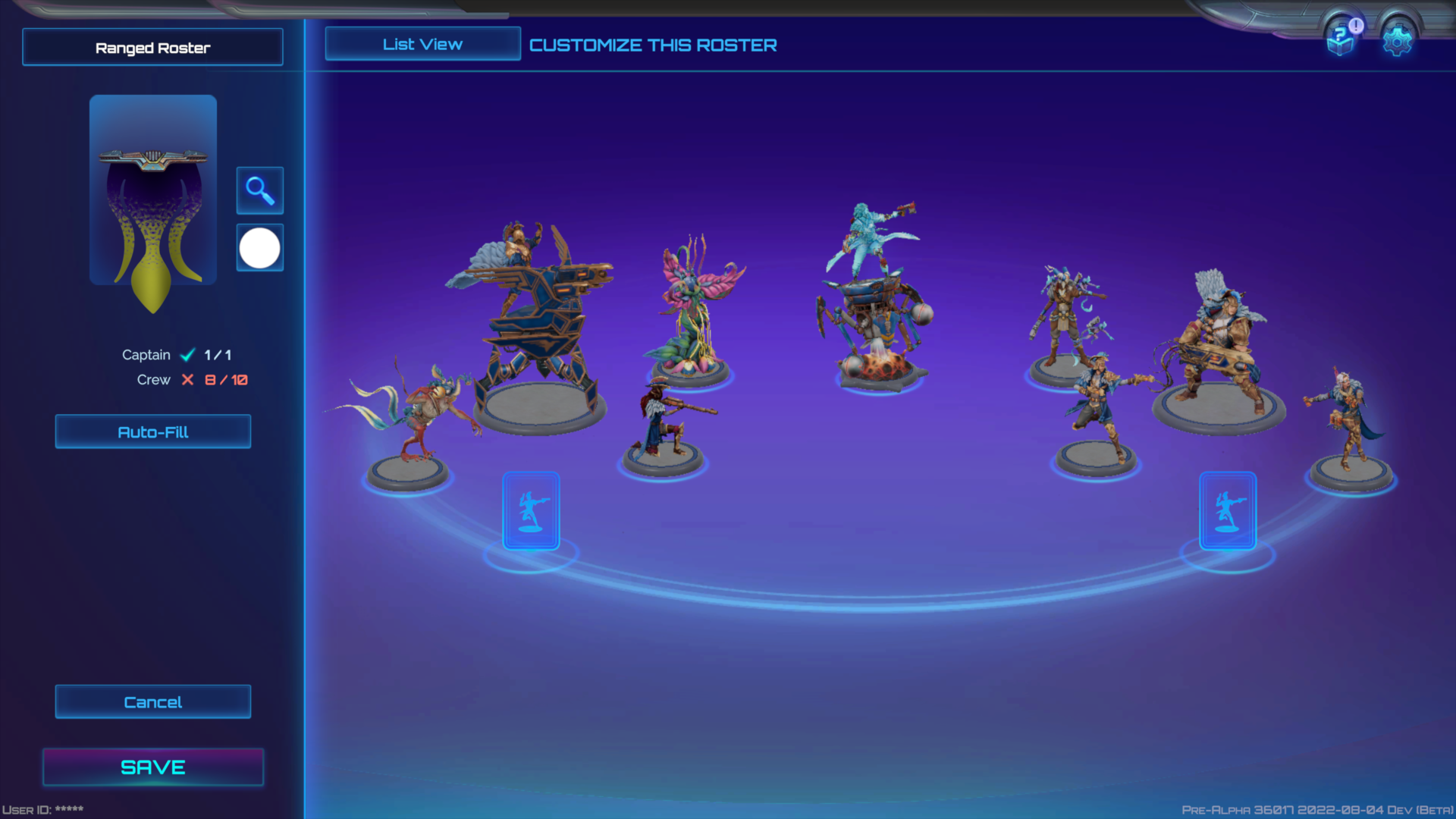
Given Sanderson's credentials as a prolific and popular fantasy novelist, it's surprising that Moonbreaker doesn't have a story-driven mode or a campaign. "We tried making a story mode, and we spent way too much time on it," says Cleveland. "We may come back to it. But we basically decided the gameplay was suffering and the story was suffering." But the story and the universe Sanderson has created still comes to the fore via other methods—primarily through audio dramas.
"Every month, approximately, we'll release a new audio drama, which is an acted podcast that you can listen to in a game while you're painting, or out of the game on your phone," says Cleveland. "And you can hear the captains and their stories, and how they're all linked together. They're about 30-minutes long so far. We're still learning how to make them, of course, but we have the full character arcs for literally years. So we're laying the framework for the first three captains in early access, and then every four months or so we're going to release a new season with a new captain, new units and new audio dramas. So, yeah, we've got years and years of this planned."
Whenever I'm painting, I usually have a podcast or TV show on anyway, so this feels like an appropriate way to flesh out the universe. And I suspect I'm going to be spending a lot of time painting in Moonbreaker. Every character has a default paint job, and they look great. Unknown Worlds considered giving players unpainted models as the default, like Warhammer, "to encourage you to paint", but the team ultimately decided that "it just felt too crappy to have a blank unit". But can you really call them your crew if you haven't painted each of them yourself? Absolutely. Screw gatekeeping. But you should paint them anyway.
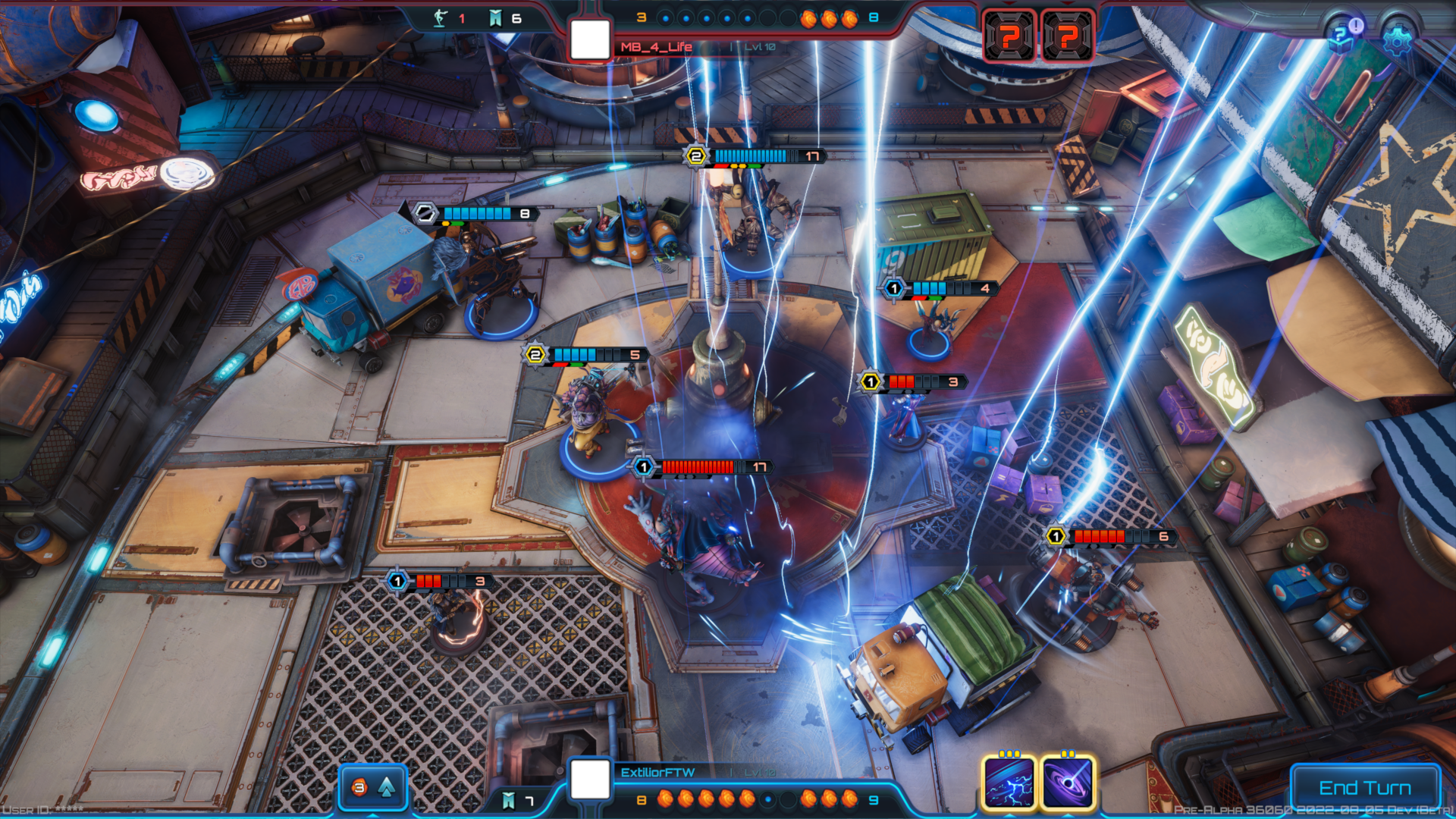
All the tools I normally have to dig out of the sarcophagus where I keep my Warhammer stuff have been conveniently recreated digitally, and in ways that make them much easier to use. The absolute bane of my existence is edge-highlighting, which requires good eyes and steady hands. My eyes are knackered and my hands are about as stable as a geriatric alcoholic. In Moonbreaker, you can do it in a few strokes. What's so great about the end result is that it doesn't look perfect. In places, the highlights might not be completely even, or some parts might be a little more faded than others. Some of this is down to the tools trying to emulate human imperfections, but it's also affected by how vigorous or slapdash you are when you're using them. These touches are what make these characters look like physical miniatures instead of regular 3D videogame models.
I just want this to be relaxing.
Charlie Cleveland, Unknown Worlds
There's a basic paint tool, a wash, a dry brush, an airbrush, stippling and decals, and you can even mix colours to create your own. You'll get a lot of different colours to work with without doing that, though, including paints that glow or look like different materials. There's a handy masking tool, too, so if you're trying to paint your gun to give it a metallic look and don't want to also paint the hand, you can make it so that the paint only hits the gun. Everything feels like it's been designed to give you all the tools you'd expect with none of the frustration that comes from not being the world's best miniature painter.
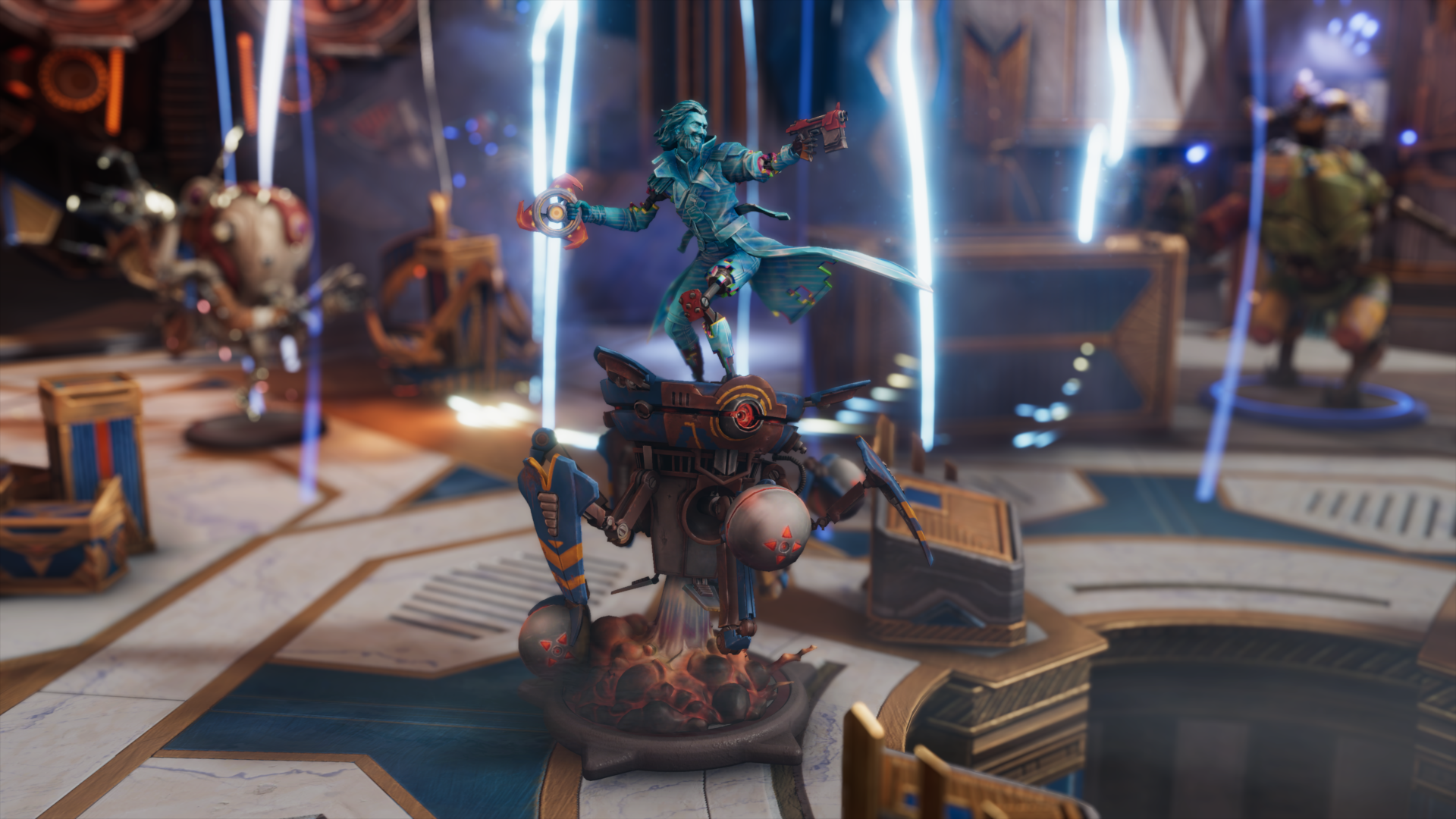
"I just want this to be relaxing," says Cleveland. "I learned how to draw over the pandemic. It was using Procreate on my iPad and Apple pencil and I just fell in love with painting and how relaxed I felt. So that's one of the inspirations for this painting setup."
Additional paints, decals, new unit paint jobs and captain skins will come with new seasons, which can be unlocked via the free seasonal track. Other cosmetic upgrades will also be available, letting you eventually gussy up each unit. And then you can give units funky auras by spending another resource, Dust, which might cover them in shadows or fire. Progressing through the season or adding auras doesn't reflect your skill at the game, but there's also a mastery system that gives units ranks and titles for playing and winning with them. Cosmetic flourishes are being considered for this second progression system as well.
Boss rush
So there are a lot of ways for you to show off when you face your opponents, who will typically be other players, though there is a dedicated singleplayer mode known as Cargo Run. "So this is heavily inspired by Dungeon Run for Hearthstone," explains Cleveland. "We've tried a whole bunch of different singleplayer modes, and this is the one that just works by far the best."

This singleplayer challenge mode pits you against five bosses in a row. These bosses are like "mini captains", Cleveland says, and are unique to the mode. Depending on your captain, you will always start with the same roster, versus a random boss. And each subsequent boss gets more health than the last, ramping up the challenge. To help you out, there are upgrades littering the map, which you can grab to beef up your units. "So you're basically modifying your roster as you play."
Moonbreaker could hardly be more different from Subnautica, but you can still see the familiar Unknown Worlds design philosophy in the way it's trying to create an easy-to-understand, accessible game that's still a great source of tension and challenge. Hopefully it will do for turn-based tactics what Subnautica did for survival games. But I'm just ecstatic that the painting is so good. The last videogame with an excellent model painting system, Might & Magic Showdown, didn't fare so well, but Moonbreaker has one advantage: it's not horrible to play.
You'll be able to fight and paint soon, too, as Moonbreaker is launching in early access on September 29. And while it has quite a bit in common with free-to-play live service games like Dota, which Cleveland cites as another inspiration, it's buy to play, with the base game costing $29.99, accompanied by a $24.99 Founders Pack.

Fraser is the UK online editor and has actually met The Internet in person. With over a decade of experience, he's been around the block a few times, serving as a freelancer, news editor and prolific reviewer. Strategy games have been a 30-year-long obsession, from tiny RTSs to sprawling political sims, and he never turns down the chance to rave about Total War or Crusader Kings. He's also been known to set up shop in the latest MMO and likes to wind down with an endlessly deep, systemic RPG. These days, when he's not editing, he can usually be found writing features that are 1,000 words too long or talking about his dog.

